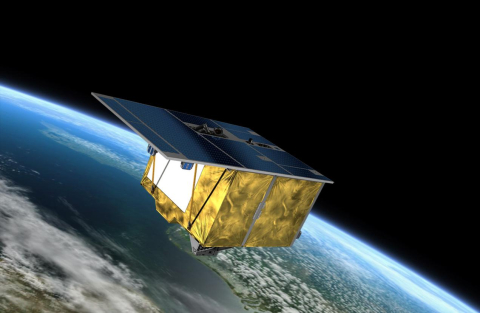The Environmental Mapping and Analysis Program (EnMAP) mission is the first hyperspectral satellite developed and built in Germany. With its two spectrometers, it analyses the solar radiation reflected from Earth’s surface at wavelengths ranging from visible light to short-wave infrared – at a hitherto unparalleled spectral resolution. This information can be used to make precise statements about conditions on Earth’s surface and how they are changing. Answers to current questions from the fields of environment and near-natural ecosystems, agriculture and forestry, land use, water management and quality, as well as mineralogy and geology, can then be obtained at various scales.
The EnMAP mission is being managed by the German Space Agency at the German Aerospace Center (Deutsches Zentrum für Luft- und Raumfahrt; DLR) in Bonn on behalf of the Federal Ministry for Economic Affairs and Climate Action (Bundesministerium für Wirtschaft und Klimaschutz; BMWK). OHB System AG was contracted to develop and build the satellite and the hyperspectral instruments. The German Research Centre for Geosciences (GeoForschungsZentrum; GFZ) in Potsdam is the science Principal Investigator for the mission.
Satellite characteristics
Launch Date - End 1 April 2022 -
État Operational
Orbit type polar, sun-synchronous
Altitude 653 km
Orbit inclination 97.96°
Orbit period 5,856 seconds
Sensor characteristics
| Sensor name | HSI (Hyper-Spectral Imager) |
|---|---|
| Sensor short description | HSI is constructed for land observation and detailed vegetation classification. VIS/NIR and SWIR spectrometers in 242 channels. Spectral range:
|
| Sensor type | Imaging radiometer (Vis/IR) |
| Resolution class | High (5 - 30 m) |
| Spatial resolution | 30 x 30 m |
| Spectral bandwidth | 420-2450 nm |
| Swath width (at nadir) | 30 km |
